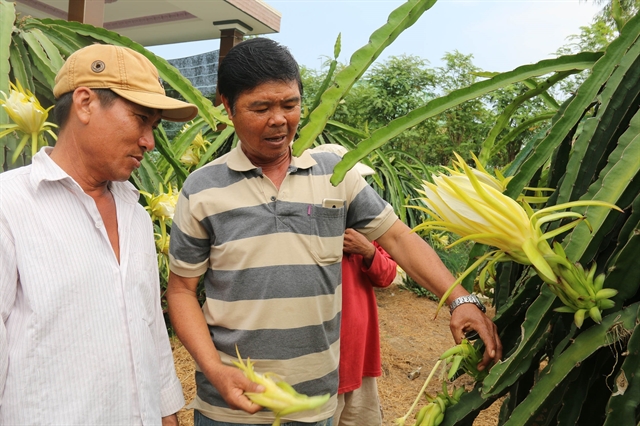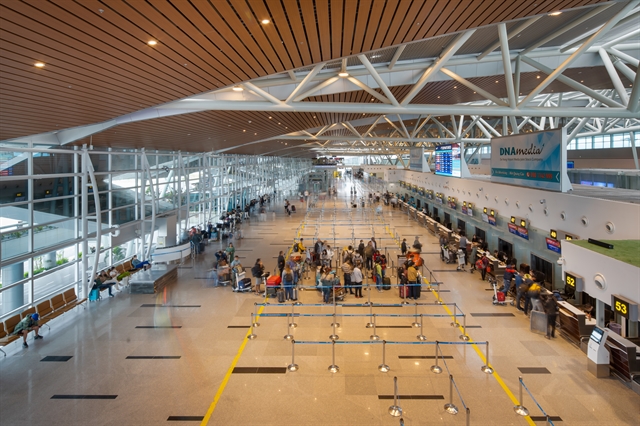 Society
Society

More rice farmers in the Cửu Long (Mekong) Delta province of Tiền Giang have switched to other crops as part of efforts to adapt to climate change.

|
| What was once a rice field in Tiền Giang Province is now a dragon fruit orchard. Many rice farmers in the province have switched to other crops from rice to adapt to climate change. – VNA/VNS Photo Minh Trí |
TIỀN GIANG – More rice farmers in the Cửu Long (Mekong) Delta province of Tiền Giang have switched to other crops as part of efforts to adapt to climate change.
In Cai Lậy and Cái Bè districts in the upstream area of the Tiền River, a tributary of the Mekong, they either switched completely or rotated rice with other crops in the ongoing 2019 -20 dry season, according to the provincial Department of Agriculture and Rural Development.
Cái Bè now uses more than 5,300ha of low-yield rice paddies to grow speciality fruits and rotates vegetables and rice on another 1,200ha.
Phạm Văn Thanh, head of the Cái Bè Bureau of Agriculture and Rural Development, said farmers had grown many high-value vegetables like bitter gourd, cucumber and onion.
They have short growing periods and high yields, and require less water and offer higher profits than rice, according to Thanh.
Farmers who grow vegetables in the two districts earn three to five times more than from rice, according to the department.
Trần Lý Ngự Bình, head of the Cai Lậy Bureau of Agriculture and Rural Development, said to enable rice farmers to switch to other crops, the district has upgraded irrigation canals and built new ones to ensure sufficient water.
Cai Lậy has invested more than VNĐ29.6 billion (US$1.3 million) so far this year in 67 irrigation projects.
Cái Bè has spent more than VNĐ56 billion ($2.4 million) to build 167 irrigation projects, dredge canals and upgrade sluices to keep out saltwater.
Affected areas
Drought and saltwater intrusion have affected nearly 60,000ha of crops in the 2019 -20 dry season in the province’s western region, which includes the two districts and Cai Lậy Town.
They include more than 23,000ha of rice and 36,000ha of speciality fruits.
Besides improving irrigation facilities, the localities have also installed water salinity testing devices along rivers.
The Cái Bè District People’s Committee has installed 25 of them in communes along the Tiền River to measure salinity on a daily basis.
Communes and farmers have hundreds more of the devices.
In Cai Lậy, in areas that lack saltwater prevention dykes, authorities have told farmers how to store water and keep out saltwater in the Hàm Luông River, one of the province’s largest.
Authorities regularly provide information about saltwater intrusion and the schedule for opening and closing sluices to farmers so that they know when to draw water from rivers and canals for irrigation.
The province has transported water from other places to save speciality fruit crops, which are facing a severe shortage of water due to drought and saltwater intrusion.
Around 2,275ha of fruit orchards have been affected by the water shortage, with 2,186ha being damaged by 30 – 70 per cent and the rest by more than 70 per cent.
Tiền Giang, the country’s largest fruit producer, has more than 77,700ha under fruits, which include specialty fruits like Lò Rèn milk apple, Hòa Lộc mango, Ngũ Hiệp durian, and Chợ Gạo dragon fruit.
The province grows more than 1.5 million tonnes annually. – VNS




